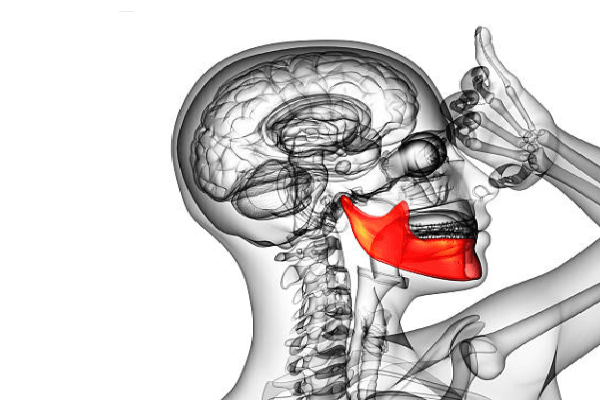Oncology >>>> Lower jaw cancer: causes, symptoms and prognosis
Lower jaw cancer: causes, symptoms and prognosis.

As a rule, the defeat of the lower jaw with cancer is secondary, since it occurs as a complication of cancer of the mucous layer covering the alveolar process, or as a result of metastasis of lung cancer, stomach cancer, breast cancer, etc. Cancer of the lower jaw as an independent primary disease occurs extremely rarely and develops from the remnants of the tooth germ, that is, it is localized in the thickness of the lower jaw bone.
Signs of cancer of the lower jaw as a primary disease:
- Often asymptomatic,
- At first it may be a loss of sensation half of the lower lip ,
- Pain in the lower jaw, radiating along the location of the alveolar nerve,
- Loose teeth in a specific area of the lower jaw.
Signs of cancer of the lower jaw as a secondary disease:
- Visible growths of the mucous membrane in the area of the mandibular alveolar process,
- The overgrown mucous membrane is covered with fibrinous bloom,
- Crater ulcers
- Loose teeth
- Difficulty opening the mouth
- Pain when swallowing
- Deformity of the lower jaw is a late sign.

Diagnosis of malignant neoplasms of the lower jaw:
The diagnosis is made after examination by doctors, a dentist-surgeon and an oncologist in order to exclude diseases similar in symptoms. Differential diagnosis of cancers of the lower jaw with periodontal diseases, gingivitis, osteomyelitis, etc. is required.
A very significant symptom for the diagnosis is metastatic lesions of the submandibular lymph nodes. Since metastasis of this type of cancer occurs early, it allows the diagnosis of the disease at an early stage.
X-ray examinations reveal the destruction of bone tissue (destruction).
Treatment of cancer of the lower jaw is comprehensive. Surgical treatment is required first, followed by radiation and chemotherapy.
Surgical intervention is carried out according to several options, correlating them with the extent of the prevalence of the process:
- Partial resection (for superficial processes)Segmental resection (for shallow lesions and affecting the alveolar process)
- Resection of half of the jaw (with tumor lesion of the jaw angle)
- Resection of the jaw along with soft tissues (in case of a tumor in the chin area)
Risks and prognosis of mandibular cancer treatment.
As with any surgical interventions, in the case of jaw surgery, there is a possibility of bleeding, the development of inflammatory processes in the soft tissues, osteomyelitis of the lower jaw bone, disturbances in the innervation and blood supply of the lower jaw, and relapse of the disease.
With extensive resections, a cosmetic defect in the facial contours appears. Modern methods of prosthetics in maxillofacial orthopedic dentistry make it possible to manufacture replacement prostheses to restore the shape and functions of the lower jaw, as well as to implant the missing number of teeth, but for this a certain amount of time must pass after the operation. First, temporary splints and implants are installed to keep the lower jaw in a normal position, and then secondary plasty can be performed (after 1.5 - 2 years to exclude relapses).
The prognosis of treatment is an improvement in the patient's quality of life and a five-year survival rate. Science is constantly working to improve the survival options for cancer patients.

Read

Read



























